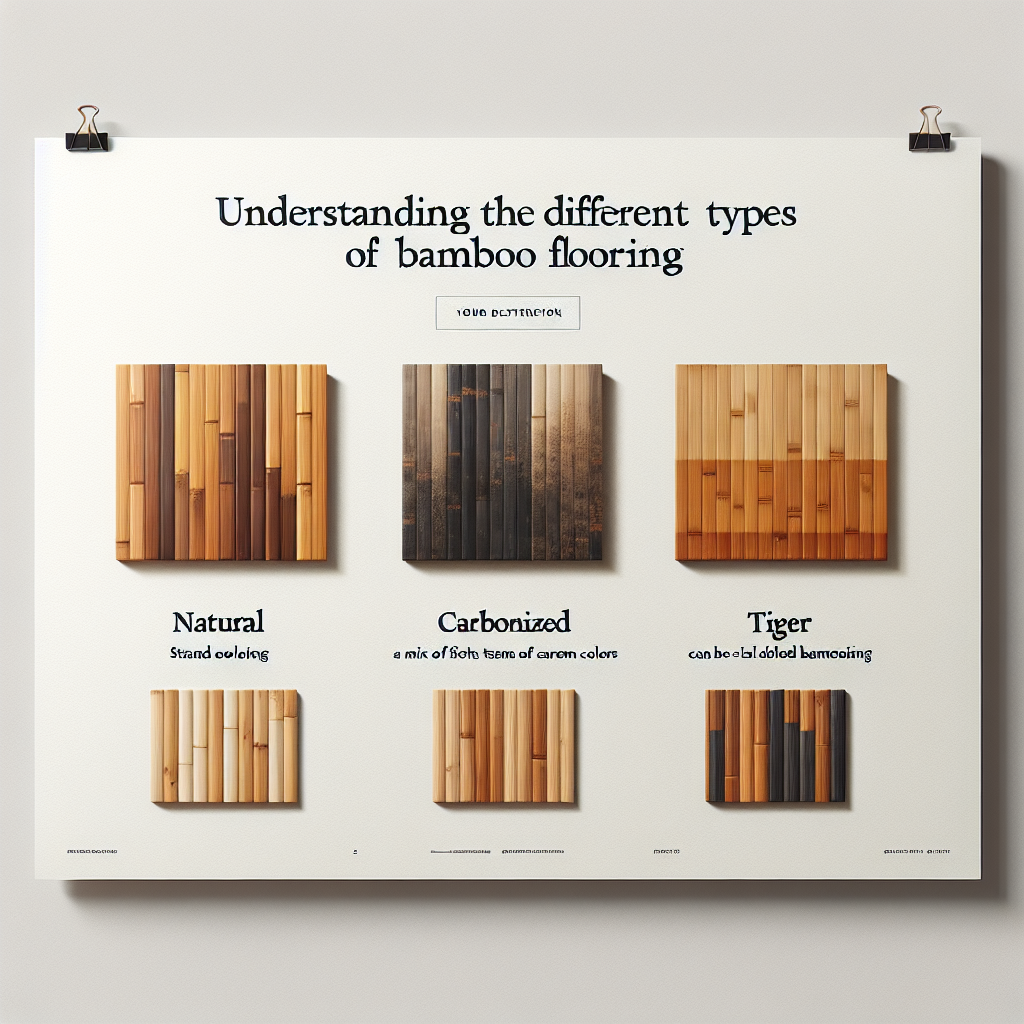Bamboo flooring has become a popular choice among homeowners and interior designers alike. With its natural beauty, eco-friendliness, and durability, bamboo offers a unique alternative to traditional hardwood flooring. However, with various types of bamboo flooring available, it’s essential to understand the differences to make an informed decision. In this article, we’ll explore the different types of bamboo flooring to help you find the perfect match for your home.
What Is Bamboo Flooring?
Before diving into the specifics, let’s clarify what bamboo flooring is. Unlike hardwood, which comes from trees, bamboo flooring is made from a grass species known as Moso bamboo. The stalks of the bamboo are harvested, processed, and then transformed into planks that can be installed similarly to traditional wood flooring.
The Main Types of Bamboo Flooring
Bamboo flooring primarily comes in two forms: Solid Bamboo Flooring and Engineered Bamboo Flooring. Each type has its benefits and drawbacks, making them suitable for different environments and preferences.
1. Solid Bamboo Flooring
Solid bamboo flooring is exactly what it sounds like: planks made entirely from bamboo. These planks are usually available in either vertical or horizontal grains and provide a beautiful, natural look.
Vertical Grain Bamboo
Vertical grain bamboo flooring is produced by placing the bamboo strips vertically during the manufacturing process. This results in a more linear pattern, which can make rooms appear taller. Vertical grain planks are denser and can be a bit harder, giving them excellent durability.
Horizontal Grain Bamboo
In contrast, horizontal grain bamboo is created by laying the bamboo strips horizontally. This type showcases more of the natural knots and grains found in bamboo, providing a striking and distinctive appearance. Horizontal grain bamboo can be softer than its vertical counterpart, but it offers a unique visual appeal.
Advantages of Solid Bamboo Flooring
- Durability: Solid bamboo flooring, particularly with a dense vertical grain, is known for its toughness.
- Refinishing: Unlike engineered flooring, solid bamboo can often be sanded and refinished, extending its lifespan.
- Aesthetic Variety: The different grain patterns provide various design options to match your home’s decor.
2. Engineered Bamboo Flooring
Engineered bamboo flooring consists of a top layer of bamboo veneer bonded to a plywood or high-density fiberboard (HDF) base. This structure provides strength and stability, making it suitable for many environments, including basements and areas with fluctuating humidity.
Benefits of Engineered Bamboo Flooring
- Stability: Engineered bamboo is less prone to warping and shrinking, making it ideal for regions with high humidity or temperature fluctuations.
- Easy Installation: Many engineered bamboo options come pre-finished and can be installed using floating, glue-down, or nail-down methods.
- Cost-Effective: Often, engineered bamboo is more affordable than solid bamboo, making it a great choice for budget-conscious homeowners.
The Finishing Touches: Texture and Finish
When selecting your bamboo flooring, consider the texture and finish. Bamboo flooring can come with a variety of finishes, including matte, satin, and glossy. The right finish not only enhances the look but also provides protection against scratches and wear.
Natural vs. Carbonized Finishes
Bamboo can also be processed to achieve different colors, notably natural and carbonized:
- Natural Bamboo: Retains the light, blonde color of the harvested bamboo, showcasing its natural beauty.
- Carbonized Bamboo: Undergoes a heating process that darkens the bamboo, resulting in a rich, caramel hue. This finish can highlight the grains beautifully but may be slightly less durable due to the softer nature of the carbonized bamboo.
Caring for Your Bamboo Flooring
Regardless of the type you choose, caring for your bamboo floor involves regular cleaning and maintenance to keep it looking its best. Here are some tips:
- Regular Sweeping: Dirt and dust can scratch the surface. Use a soft-bristle broom for regular cleaning.
- Damp Cleaning: Use a damp mop with a solution specifically designed for bamboo or hardwood floors.
- Avoid Excess Water: Bamboo is sensitive to water; do not soak your floors when cleaning.
Conclusion: Choosing the Right Bamboo Flooring for You
Bamboo flooring offers a stunning and sustainable option for any home. With solid and engineered choices available, understanding each type’s benefits helps homeowners select the perfect flooring to suit their needs and style. Whether you prefer the versatility of solid bamboo or the stability of engineered bamboo, embracing this eco-friendly material enhances your living space while showcasing a commitment to sustainability.
As you embark on your flooring journey, consider your lifestyle, environment, and aesthetic preferences. With the right bamboo flooring, you can create a beautiful, welcoming home. Happy decorating!


